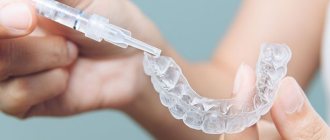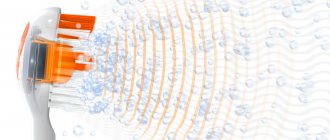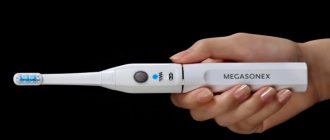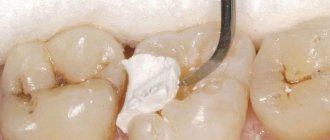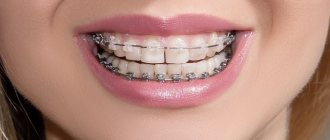Research shows that pulsating water can remove 99% of plaque from teeth in just three seconds. It is this technology that underlies the work of the irrigator - a modern device for caring for gums and teeth. How an oral irrigator works, the benefits and harms of its use - this will be discussed in the article.
In this article
- Features of cleaning teeth and gums with an irrigator
- What are the benefits of using an irrigator?
- Is there any harm from using an irrigator?
- How to use the device so as not to harm your health?
Diseases of the ENT organs and frequent acute respiratory viral infections
Rinsing your nose with a solution of table salt is something that is recommended to almost everyone and always for sinusitis, frequent runny nose, and exposure to ARVI.
The mucous membranes of the nasopharynx very often suffer from dryness - this is both the consequences of poor ecology and thinning under the influence of drugs. And dry mucous membrane becomes easily permeable to viruses and bacteria. The most common solution of table or sea salt (half a teaspoon per glass of water) not only disinfects, but also restores the moisture of the mucous membranes, so rinsing the nose with an irrigator and a special nozzle is an alternative to pharmaceutical sprays “with sea water”, which are most often not made from “Adriatic water”, but from saline solution. It's not bad, it's just not very fair, and it's also expensive.
If there are several attachments in the set, then the whole family can use the irrigator (this applies not only to nasal attachments). The lowest pressure is used to rinse the nose.
What you need to consider to avoid harm
An irrigator is a good tool for the prevention and treatment of the oral cavity; the main thing is not to forget about the rules of use and take into account all contraindications. If you experience any problems with your teeth and gums, use the device with extreme caution and only after consulting your doctor.
Source: Pharmindex.ru for the newspaper "Pharmacy"
Smell from the mouth
The problem may arise not only due to dental problems, this is determined by the doctor: there may be disorders of the gastrointestinal tract or diabetes. But in half of the cases, bad breath indicates poor hygiene and the presence of so-called periodontal periodontal “pockets” - when the gum moves away from the neck of the tooth and forms a small cavity. Sometimes this is a “lifelong” problem: the gum cannot be glued back, and until the tooth is removed, it will remain so. But it is very possible and necessary to take care of this area; some models of irrigators are equipped with special periodontal nozzles that best cope with the problem, but a regular jet will also help a lot.
In addition, sometimes the irrigator kit includes a tongue cleaning attachment - it is needed by people whose odor problem is related not to dental diseases, but to other diseases.
What are the advantages of irrigators
The oral irrigator is recommended today by leading dentists around the world. The first device was introduced to US consumers in 1955. Over the years, various models of irrigators have undergone many clinical trials and each time prove their effectiveness over a conventional toothbrush.
To clean the dentition, the device uses a directed stream of water, which not only irrigates the oral cavity, but penetrates into the most inaccessible corners, removing food debris and plaque, reducing the likelihood of caries. The design allows you to regulate the degree of liquid atomization and the jet pressure, so there is no damaging harm to tooth enamel, and the use of various nozzle options helps solve various oral care problems at home.
The device is recognized all over the world and is recommended by dentists for daily oral hygiene.
What types of irrigators are there?
Conventionally, irrigators can be divided into three categories:
- stationary - hung on the wall or placed on the sink, powered by mains, designed for a family, includes several attachments
- rechargeable, portable - can be taken to the office or on trips, the tank capacity is enough for one use
- irrigator nozzles for the faucet - water flows into the nozzle “by gravity”, they do not need an electrical connection
Standing apart are devices that use not just a water jet, but an air-water jet; this option is closest to a real dental instrument.
We have selected several interesting and “indicative” models of irrigators so that you can get your bearings.
Features of cleaning teeth and gums with an irrigator
Even children know the benefits of good oral hygiene. Modern dentistry offers new care technologies that improve the quality of cleaning several times. Along with using a toothbrush, paste and floss, doctors recommend treating the surface of the teeth and gums with a powerful stream of water or a special solution using an irrigator.
The device supplies liquid under pressure in different modes, which allows you to effectively clean out food debris from interdental spaces, remove plaque, clean the tongue, the inside of the cheeks, the soft palate from dirt, and maintain the cleanliness of braces, crowns and other dental structures.
Dentists emphasize the important preventive role of this device in preventing diseases of the gums and oral cavity.
In order for the device to be as useful as possible, you need to choose the right model. For a large family, a stationary irrigator with different operating modes and attachments is suitable. For trips and business trips, you can take a portable device. It is smaller in size and comes with fewer attachments, but it is battery-powered and will allow you to keep your teeth clean even while traveling.
Seven signs to look out for
Do you want to check how your toothbrush copes with its function and whether the Waterpik irrigator has advantages? You can assess the condition of your teeth using these signs:
- presence of caries,
- the presence of tartar (hard plaque that hardens on the teeth as a result of insufficient daily brushing),
- presence of bacteria on teeth,
- presence of gum disease (bleeding and others),
- Are your teeth hypersensitive (do they react to things that are too cold or too hot with aching pain),
- “yellowishness” of teeth or the presence of so-called dark plaque,
- freshness of breath, which is also reflected by the presence of food debris between the teeth.
The detection of several of the seven signs directly indicates that the quality of oral hygiene is insufficient. Clinical studies prove that long-term use of the Waterpik irrigator significantly reduces the risk of identifying seven so-called signs of unhealthy teeth.
Expert opinion on the benefits and harms of the device
Experts have revealed that the irrigator must be chosen very carefully, because only with proper handling and selection of the optimal model can complete safety be guaranteed. The device is able to completely eliminate problems associated with inflammatory processes and bleeding gums.
In modern dental clinics you can often find an irrigator. Now it’s worth answering the question for yourself: will a professional risk his reputation because of the possibility of causing even the slightest harm to a patient? Naturally not. That's why you shouldn't worry about talking about the possibility of harming your teeth and mouth.
Dentists recommend buying this device:
- people suffering from diabetes;
- as a treatment for periodontitis and gingivitis;
- during pregnancy;
- as a caries prevention;
- for the care of braces, crowns, etc.;
- to eliminate unpleasant odors;
- for better hygiene;
- with some structural features of the teeth.
Thus, we can confidently say that only benefits remain from the action of the irrigator; the main thing is to choose the right drugs.
Care
It is not enough to choose a good dental irrigator. For it to work for a long time and efficiently, you need to use it correctly. Here are a few simple rules that will extend the life of your device:
- The device connected to the network must not come into contact with water or be located near heating devices.
- Do not touch it with wet hands.
- Do not treat with alcohol or alcohol-containing products.
- It is necessary to ensure that the cord remains intact.
- Only water and specially designed liquids can be poured into the container.
- If you hold down the pause button too long during operation, the device may burn out.
- Upon completion of work, it is necessary to remove the remaining liquid from the tank. For this purpose, you can leave the device running for a while to allow the water to evaporate.
- It is advisable to use attachments only recommended by the manufacturer.
Benefits of the device
The benefits of using the device include the fact that it improves the condition of the tooth surface . Patients with crowns and braces solve the problem of difficulty maintaining oral hygiene.
It is worth noting! Cleaning with the help of the device significantly increases the service life of dental products, and also maintains the health of the tissues underneath them, preventing the occurrence of inflammation.
Pros of the oral cavity device:
- Improves microflora;
- Fights unpleasant odor;
- Effectively cleans the cavity in patients with non-standard arrangement of teeth (“crowded teeth”);
- Helps diagnose periodontitis;
- Performs sanitation of gums and canals;
- Improves mucosal healing;
- Reduces the risk of developing caries;
- Fights the appearance of tartar.
Remember! For a positive result, you must carefully select the optimal device model and follow the instructions for use.
What is possible and what is not: Indications and contraindications for using an irrigator
Using stationary devices powered by a 220 V network and portable irrigators charged with oral care batteries, a number of dental diseases can be prevented and/or prevented.
Photo: An irrigator is an assistant in the fight against various diseases.
The irrigation device can be used by:
- Reducing the risk of carious lesions.
- Massage of soft gums and soft tissues.
- Careful treatment of pathological pockets.
Tool work is contraindicated:
- In acute form of periodontitis.
- Immediately after surgery.
- After installation of orthodontic devices and multibonding systems.
- Constant bleeding gums.
- New formations in the mouth.
- For heart disease: heart attacks and/or strokes.
- Installation of a pacemaker.
Photo: Visiting the dentist can become regular if you neglect your health. The use of an irrigator opens up wide possibilities for prevention and high-quality care of teeth, gums and oral cavity.
Content
- What is a dental irrigator and what is it for?
- Components and principle of operation
- Types of irrigators Stationary
- Portable or travel
- Flow-through
- Oral cleaning technology
Indications for use of an oral irrigator
An irrigator is a convenient and useful device designed to rinse the mouth from food debris. The device delivers a pulsating stream of water with microbubbles under pressure and cleanses the teeth and mucous membranes of deposits and microorganisms. The device does not serve as a replacement for a brush, but complements it well, disinfects the oral cavity and freshens breath for a long time.
An oral irrigator does not cope with tartar, but it removes fresh plaque well
The irrigator can be used both for the prevention of dental diseases and for existing problems. The unit brings particular benefits:
- with bleeding gums;
- with narrow gaps between the teeth, in which pieces of food often get stuck;
- in the presence of braces, bridges, dentures, implants and other structures in the oral cavity;
- for chronic stomatitis, gingivitis and periodontal disease;
- with a large number of fillings and a tendency to caries.
The irrigator is a multifunctional device. First of all, it is intended to cleanse the oral cavity of deposits and bacteria. But at the same time, during use, the device gently massages the gums, improves blood circulation in the tissues and prevents the development of inflammation.
Advice! If your mouth is healthy, you can fill the device with regular filtered water. If you have dental problems, it is better to use a special antiseptic solution.

